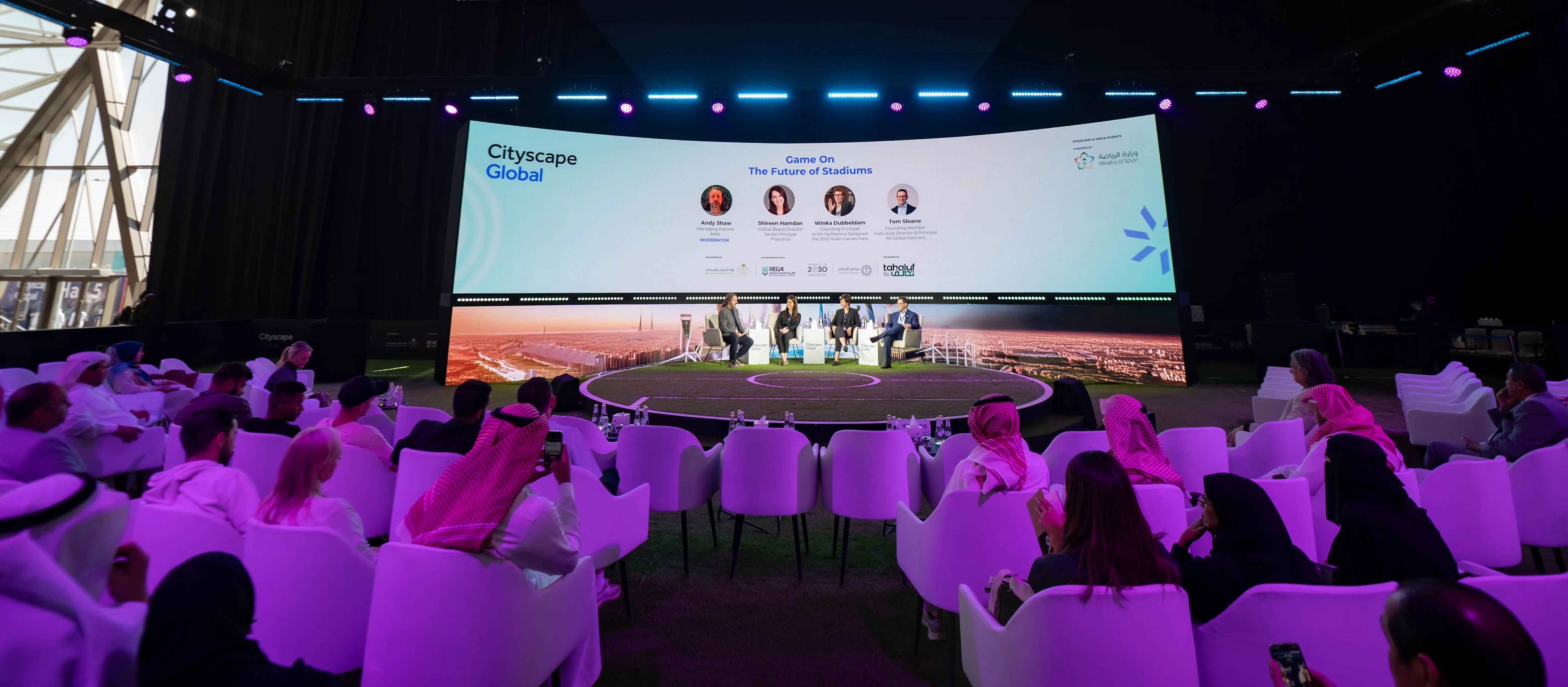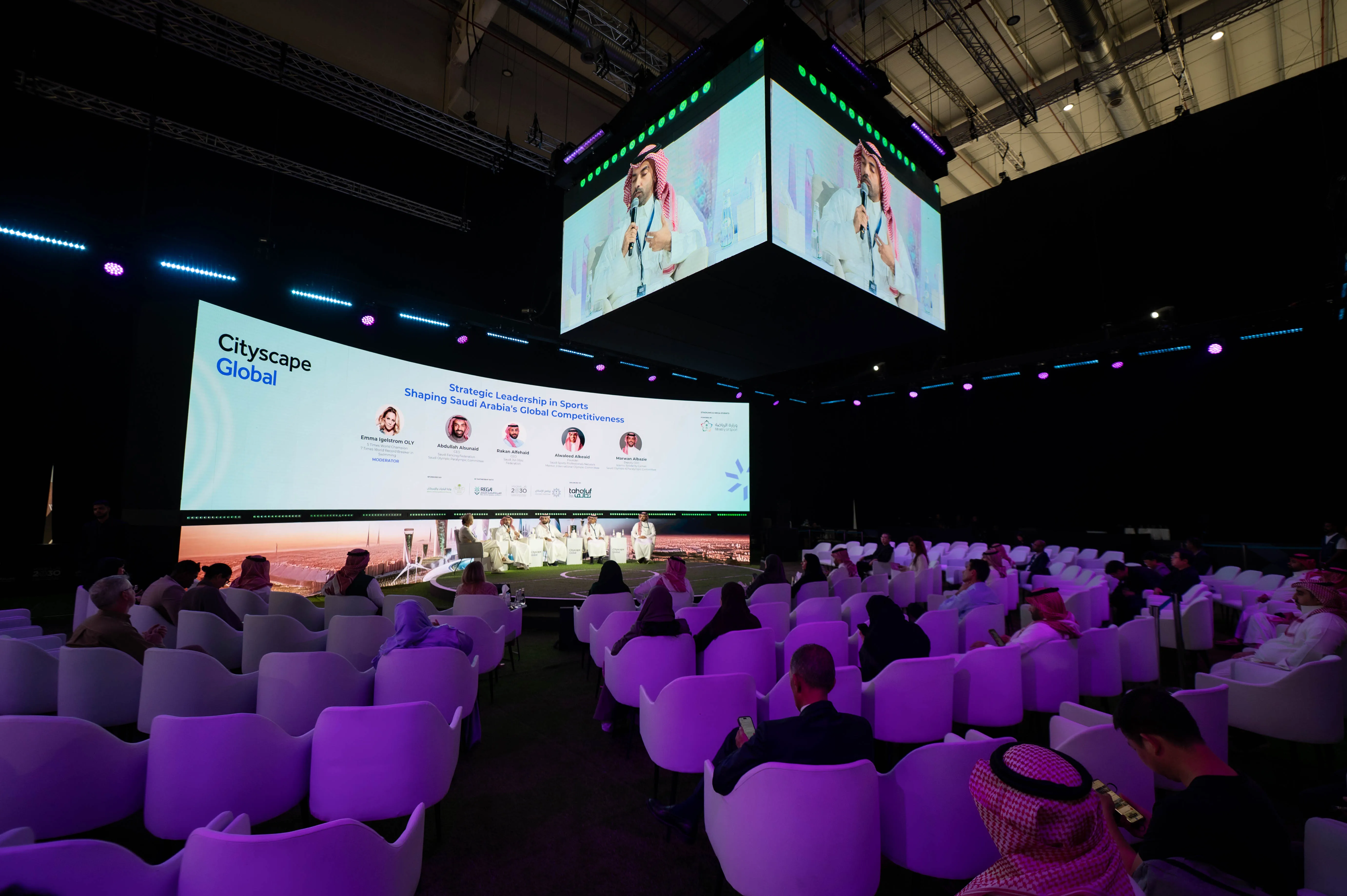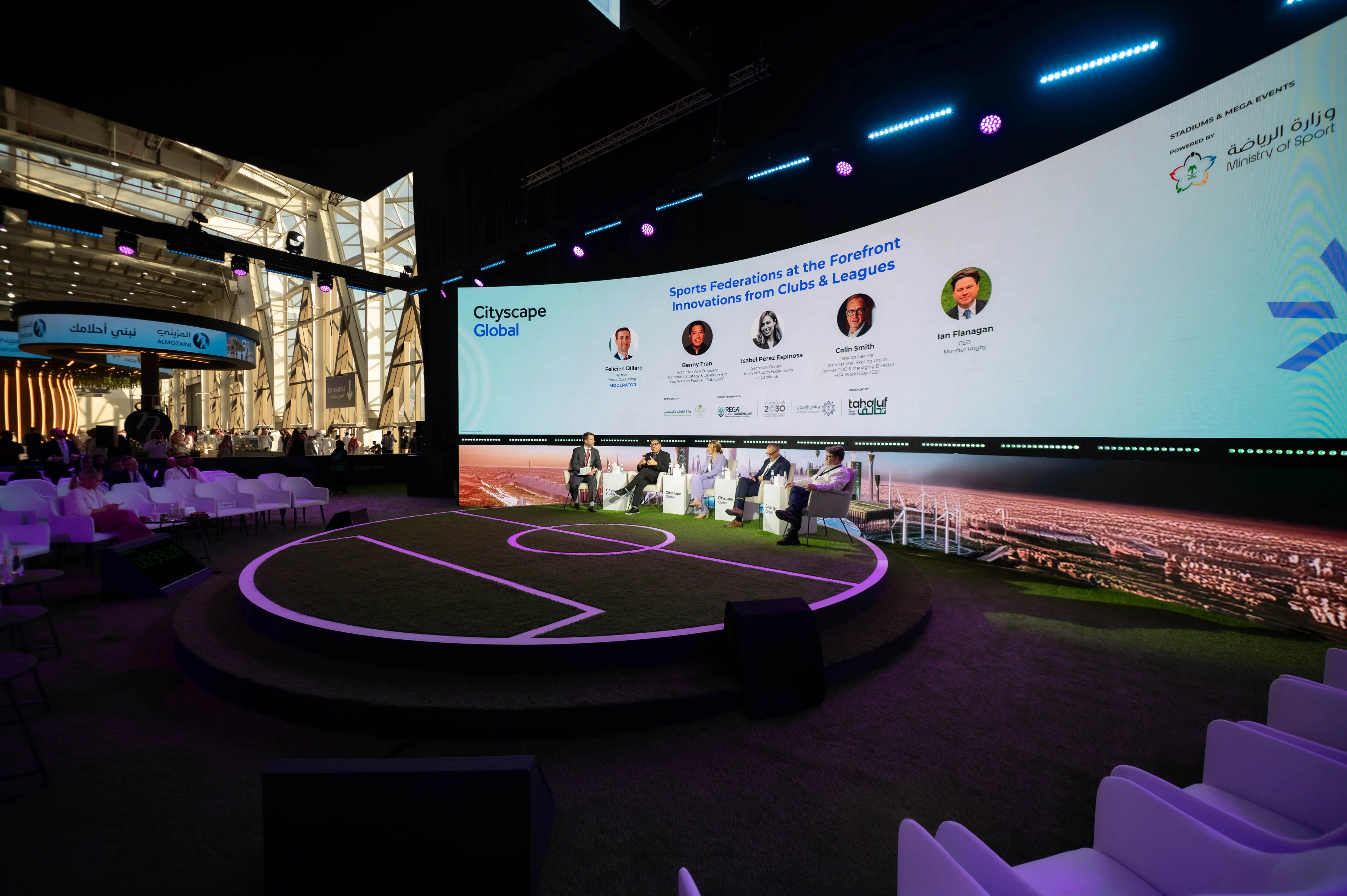The future of stadiums isn’t just about bigger crowds or better seats–it’s about crafting entire ecosystems that merge culture, community, sustainability, and cutting-edge technology. At the Stadiums and Mega Events Stage (Now ESTAAD) at Cityscape Global 2024, the session “Game On: The Future of Stadiums” brought together leading voices in stadium design and urban planning to explore how tomorrow’s venues are being reimagined from the ground up–especially in the dynamic context of Saudi Arabia’s transformation.
From Matchday to Everyday: How Stadiums Are Becoming Part of the City

Stadiums as Urban Anchors, Not Isolated Icons
Moderator Andy Shaw, Managing Partner, AMA, opened the discussion with a compelling reflection: stadiums aren’t just buildings; they’re emotional engines, bringing together diverse generations and cultures for shared experiences of joy and heartbreak.
That ethos is at the heart of Saudi Arabia’s next-generation sports infrastructure. As Shireen Hamdaan, Global Board Director at Populus, detailed, Saudi Arabia’s approach has shifted away from suburban mega-structures surrounded by car parks and toward integrating stadiums into vibrant urban master plans. Examples like the Aramco Stadium in Khobar and the King Salman Stadium in Riyadh are designed not as standalone arenas, but as living, breathing parts of the city—connected via cycle paths, retail hubs, and community spaces. This shift turns stadiums into 365-day destinations, not just one-day spectacles.
Nature, Technology, and New Typologies
Winka Dubbeldam, Founding Partner at Archi-Tectonics NYC LLC and designer of the 2022 Asian Games Park, joining from New York, offered a bold vision for how stadiums can blend ecology with innovation. Her work in Hangzhou for the Asian Games involved a massive, park-dominant scheme where 85% of the development is green space. The stadiums themselves function as “oxygen-producing machines,” boasting green roofs that absorb over 115,000 kg of CO₂ annually and generate more than 84,000 kg of oxygen. The result: an environment where stadiums are no longer white elephants but contributors to environmental health.
This fusion of landscape, architecture, and technology also redefines the look of stadiums. Instead of traditional, standalone mega-structures, we're seeing hybrid buildings with underground shopping valleys, embedded concert halls, and sponge-city wetlands that clean river water. This approach, both poetic and practical, assures the audience that the design is not just for events, but for the long-term regeneration of urban areas.
Flexibility: The New Gold Standard
Tom Sloane, Managing Director at MI Global Partners, based in Australia, highlighted a growing global trend: stadiums must be flexible, multifunctional venues that work just as hard outside of match days. From his experience, venues must efficiently shift between modes from football to concert, and from corporate conference to public gathering. It’s not about creating “Swiss army knife” buildings that do everything poorly, but designing adaptable spaces with clear intentions and efficient changeovers.
Adjustable seating, retractable roofs, and removable floors are just a few of the features. Hospitality boxes that transform into hotel rooms or corporate meeting suites offer both revenue opportunities and user-centric versatility.
As Shireen noted, this flexibility is especially relevant in Saudi Arabia, where venues are designed to support a diverse demographic and accommodate cultural nuances, from family zones to spaces for female athletes, in line with Vision 2030’s goals for inclusive participation.
Technological Immersion and Experience Design
Modern fans expect more than a game - they want a personalised, immersive experience. The panel discussed how technology is transforming both the stadium infrastructure and the spectator experience.
Digital screens, lighting, and sound systems create a programmable atmosphere where the stadium becomes an integral part of the performance. AI-driven wayfinding and integrated hospitality systems help individualise experiences even in mass environments. MSG Sphere-level visuals, cloud-based acoustic speakers, and responsive LED meshes are quickly becoming standard tools in designers' kits.
More than a spectacle, this technology supports revenue growth and adaptability, ensuring that every event– sports or otherwise feels fresh and engaging.
Sustainability and Legacy: Building for the Long Term
Environmental sustainability was a recurring theme. From LEED Platinum certifications to solar shading wings and water-cooling wetlands, stadiums are now being designed as environmentally conscious structure . Saudi projects are embracing local materials
and localised supply chains, supporting both carbon goals and domestic economic growth.
But true sustainability also means legacy. The panellists agreed: stadiums must be designed not just for headline events, but for the communities that live around them. This means embedding stadiums into urban life, surrounded not by asphalt, but by parks, schools, retail, and transport infrastructure. Tom Sloane cited Sydney Olympic Park as a successful legacy example. At the same time, Shireen pointed to King Fahd Stadium’s transformation from a car-park island into a community park. The takeaway? Legacy isn’t an afterthought. It’s the starting point.
Closing Reflections: Passion, Innovation, and the Human Experience
As the session wrapped, each speaker shared a personal anecdote - moments of awe and joy in stadiums, from Rio to London, Brisbane to Hangzhou. Whether it was a spine-tingling Coldplay concert in Sydney or the electric atmosphere of a football derby in Brazil, these stories reminded us why stadiums matter: they host memories that last a lifetime.
Don’t Miss More Thought-Provoking Conversations at ESTAAD 2025!
As stadiums evolve into immersive, multifunctional hubs of culture and community, the conversation around their future becomes more vital than ever. That’s why ESTAAD, co-located with Cityscape Global 2025, is the must-attend event for anyone shaping the future of sports, entertainment, and urban design.
Come, see the concepts discussed here brought to life. Discover the innovations shaping the next generation of stadiums. And be part of the community building the future of sports and entertainment.
Learn more and plan your visit to ESTAAD.
Game on! Secure Your Front-Row Seat Now.

